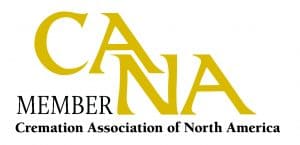The cremation rate has reached almost 60% and is forecast to approach 80% by 2035. Although most of us now understand the basics of what a cremation disposition entails, families grappling with some quandary about cremation still ask us questions every day.
So, we have put together this ultimate guide to cremation. Everything you need to know, even what you didn’t know, you needed to know!
Direct Cremation From $695 – Visit DFS Memorials for Locations.
We will cover the cremation process, legalities, different cremation service options, alternatives to flame cremation, cremation costs, what happens with the cremation ashes, cultural and religious considerations, cremation for the overweight, and cremation artifact memorialization options. You can use the links below to jump to each section.
The Cremation Process Explained
Understanding the legal requirements to authorize cremation & release cremains
Can DNA be extracted from cremation ashes?
What type of cremation service best suits your needs
Alternatives to flame cremation – Bio Cremation (Water Cremation)
What Can You Do With The Cremated Remains?
Religious and cultural considerations relating to cremation
Can an obese or overweight person be cremated?
Choosing cremation artifacts for memorialization
What happens with unclaimed cremated remains?
Further Common FAQs about Cremation
The Cremation Process Explained
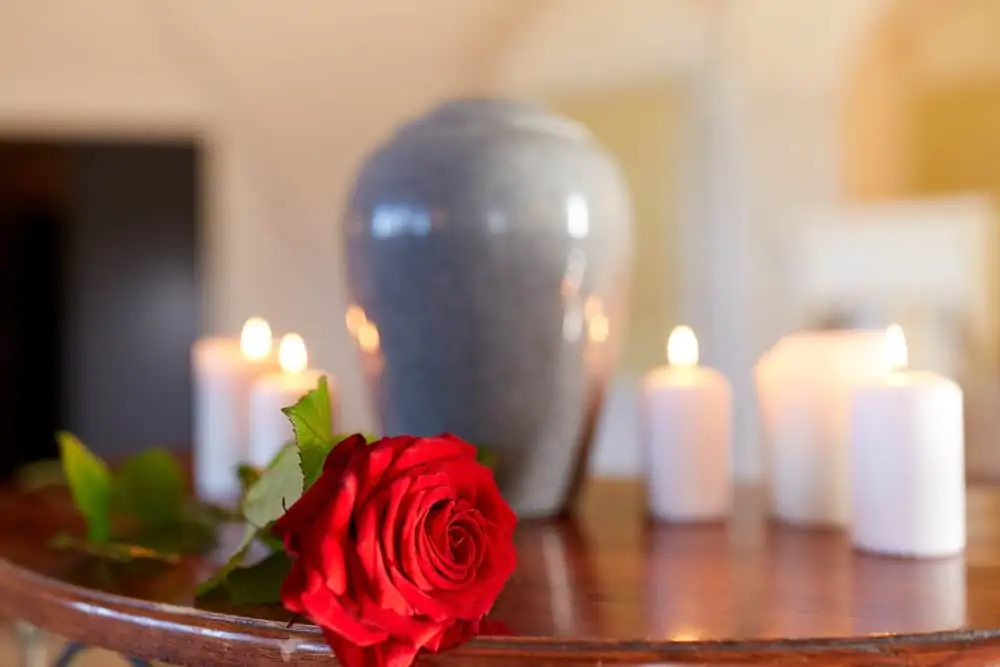
Flame cremation reduces a deceased body to ashes by applying an intense fire temperature, which vaporizes organic matter and reduces a human body to bone fragments. This process occurs inside a cremation retort, a chamber that heats to around 2,000 degrees Fahrenheit. The process can take between two and a half and four hours to complete (depending on the grade of cremation equipment).
The remains are then removed from the retort and allowed to cool before being transferred to a cremulator, where any remaining large bone fragments are ground to a finer consistency, and any small metal elements (such as dental fillings and metal pins) are filtered out.
The resulting ‘cremains’ are then transferred to a cremation urn in readiness for returning to the family.
A metal ID tag is logged with the body once it enters the funeral home or crematory, and this tag remains with the body throughout the process to ensure proper ID cross-checks are made. The metal tag is enclosed with the cremated remains in the urn as it is returned to the family.
Certain steps are followed to prepare a body for cremation. Certain medical implants like pacemakers must be removed as these can combust and explode when subjected to such intense heat.
Other radioactive therapeutic implants may be removed if they are known to contain mercury, as mercury emissions are detrimental to the environment. Jewelry items may also be removed from the deceased prior to cremation.
The deceased is cremated in a “suitable combustible container.” This is most commonly a sturdy cardboard casket box these days. This is inexpensive and saves on the unnecessary cost of a casket.
Note: If a funeral service is being held before cremation, many funeral homes will now offer rental caskets for the service. A specially designed rental casket will hold the inner cremation container so that it can be easily removed after the service without disturbing the body.
Understanding the legal requirements to authorize cremation & release cremains
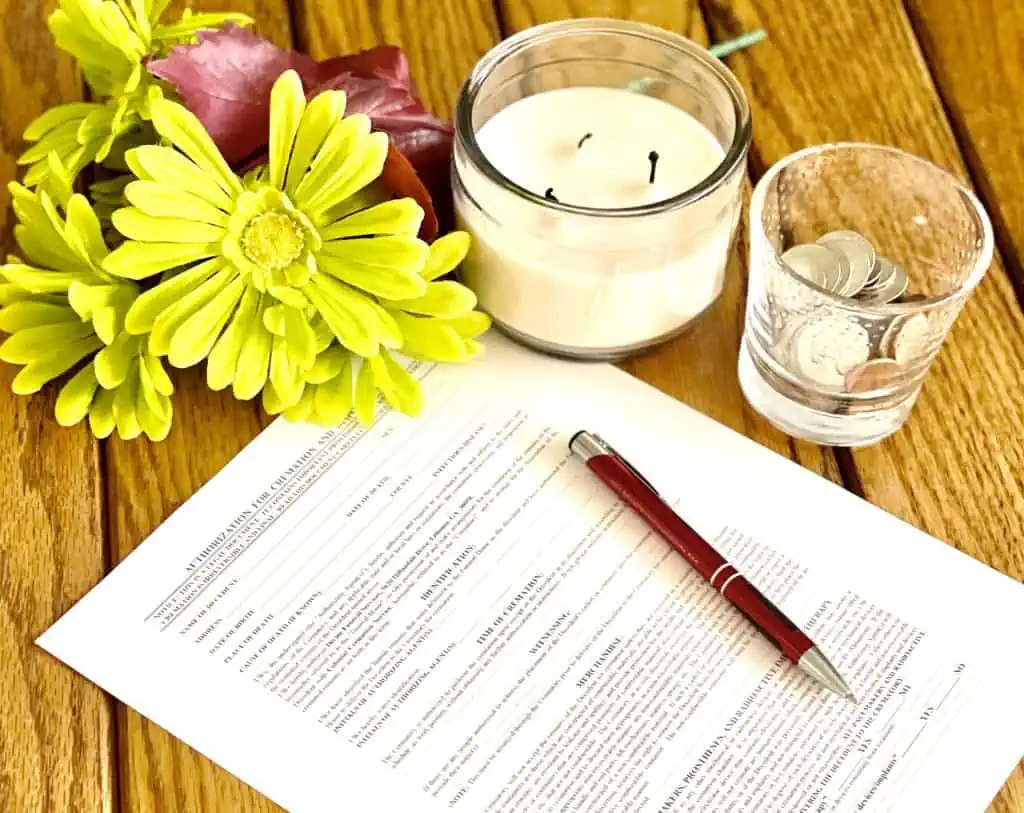
Complying with the authorization to cremate requirement
Cremation is regulated to ensure proper procedures are adhered to. As cremation is such a final disposition of human remains, it is critical that certain ‘checks and measures’ are in place to prevent a deceased person from being cremated without the proper legal measures being met.
A cremation can only proceed when a Cremation Authorization document has been appropriately signed and notarized by the family to consent to a cremation disposition. This is to ensure that the family has met full consent.
If an individual did not pre-sign to consent to cremation, the surviving family would need to comply with the required authorizations.

This can be straightforward if a surviving spouse authorizes cremation, but it can become more complicated if surviving siblings need to agree on consent for the cremation of a parent. All siblings will need to agree and sign consent. Similarly, today, with estranged family members or lost contact with relatives, sometimes obtaining the legally required authorization can become problematic.
If you consider cremation as a funeral option for yourself, it can be much easier for the surviving family if you have pre-signed the required authorization forms.
The Cremation Authorization document usually also specifies to whom the cremated remains can be released. This ensures that the cremation ashes are only released to the correct family member.
This also mitigates any liability of the funeral home in handling the remains and ensuring they are passed to the person responsible.
It is becoming more common these days for a crematory or funeral home to add a clause to a cremation contract that gives them the right to respectfully scatter or inter cremated remains that the family member within an agreed time scale does not collect. Commonly, this is a 90-day clause.

Unfortunately, as some families are not sure what to do with the cremated remains (and often do not want to incur further costs arranging to inter the ashes), a growing problem is that funeral homes are being left with unclaimed cremated remains.
This is why more have had to add a ‘right to dispose of remains’ clause to a cremation contract. Storing remains for a long period of time can add to overhead costs for a funeral home and create additional human remains management issues.
Click here for a PDF Example of a Cremation Authorization document.
Mandatory wait period between death and cremation: 24-48 hours
Many states have imposed a legal mandatory wait period after death before a cremation can proceed. In most states, this is either 24 or 48 hours, although some states have no mandatory period in their cremation legislation. However, it is typical that it can take up to 72 hours to get the legal authorizations signed and filed and a cremation permit issued.
Cremation, Unnatural Death, and the Medical Examiner
As we have covered, cremation, being such a final disposition of the body, requires the appropriate legal authorization to proceed. The county coroner or medical examiner issues the Permit to Cremate once all the documentation is in order.
Then, the funeral home/crematory can make arrangements to schedule the cremation.
If a death was unnatural, the result of unexplained circumstances, or maybe a sudden death at a residential address, the ME will be involved. He or she will need to determine the cause of death (and indeed, no suspicious causes) before issuing a Cremation Permit.
This is just another check in place to prevent a cremation from going ahead before the circumstances of the death have been cleared.
Can DNA be extracted from cremation ashes?
Although DNA extraction science has improved tremendously recently, extracting DNA from cremated remains can still be problematic. DNA begins to degrade at 800 degrees Fahrenheit, and since a cremation retort heats to temperatures of 1800 – 2000 degrees, most DNA traces are destroyed in the process.
Some DNA testing companies offer DNA profile testing for cremated remains, but they generally indicate that the chances of success in determining a DNA profile can be very slim. DNA can only possibly be recovered from bone or teeth fragments, but the pulverization process post-cremation can leave few fragments to be recovered.
Another option becoming more common today is for the funeral home to obtain a DNA sample from the deceased prior to cremation. This can be a simple mouth swab that is then encased in a sealed vial and sent to a DNA storage vault.
It can be useful to ensure a sample of DNA is held in legacy for family members. Especially if future testing for hereditary diseases or paternity claims may be required. This service can cost in the region of $300 – $500, so it can be a significant surcharge to a simple cremation service.
What type of cremation service best suits your needs
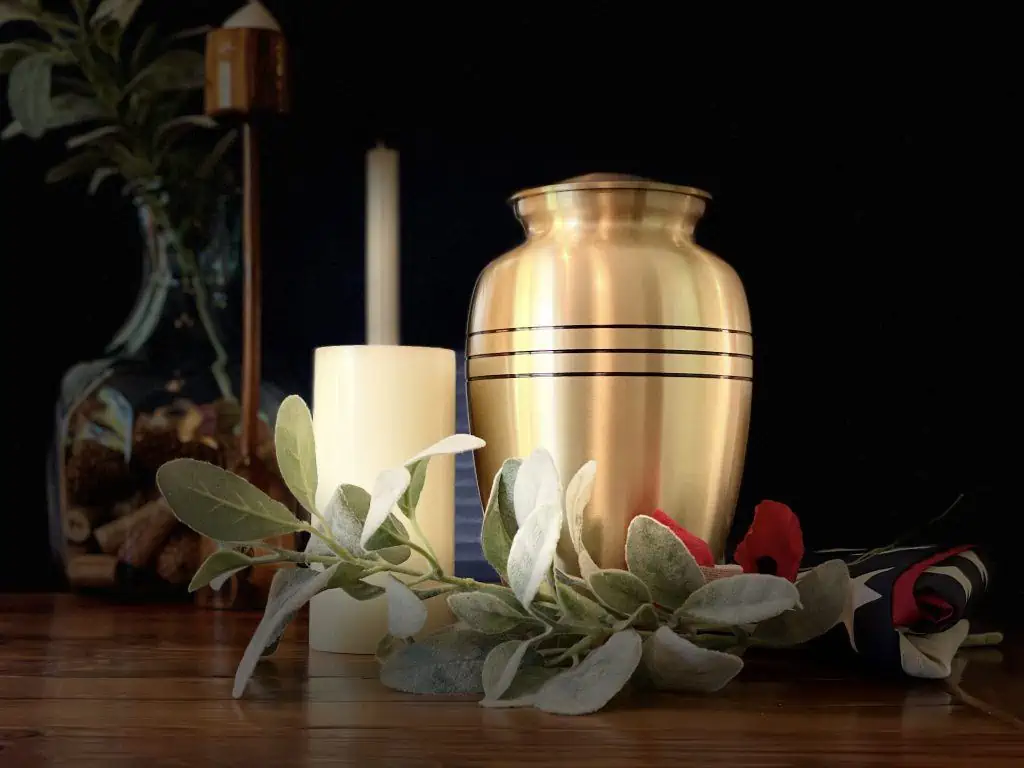
This can sometimes be quite a confusing decision. The cremation rate is almost 60% today, but there is no easily accessible data on the different types of cremation services that make up that 60%.
Many funeral homes report that direct cremation is the most affordable cremation option and constitutes 70% of all cremations they perform.
Many funeral directors understand (and have embraced) the demand for simple, low-cost cremation services.
Realizing that changing times call for adapting to the needs of today’s families in the services they offer. Due to economic concerns, less traditional values, and migrated and transplanted families, death care consumers today demand simplicity and affordability. Direct cremation seems to meet this demand.
The experience of the Covid pandemic has also drastically altered our funeral rituals. For many months, no funeral gatherings could occur. Even family arrangement meetings were being held by phone or online. Lots of families had no choice other than to opt for a simple cremation service to attend to the disposition of a loved one.
Check out our guide to FEMA funeral assistance for a COVID-related death if you think you may qualify for a claim.
Here’s a summary guide to cremation options you can choose from:
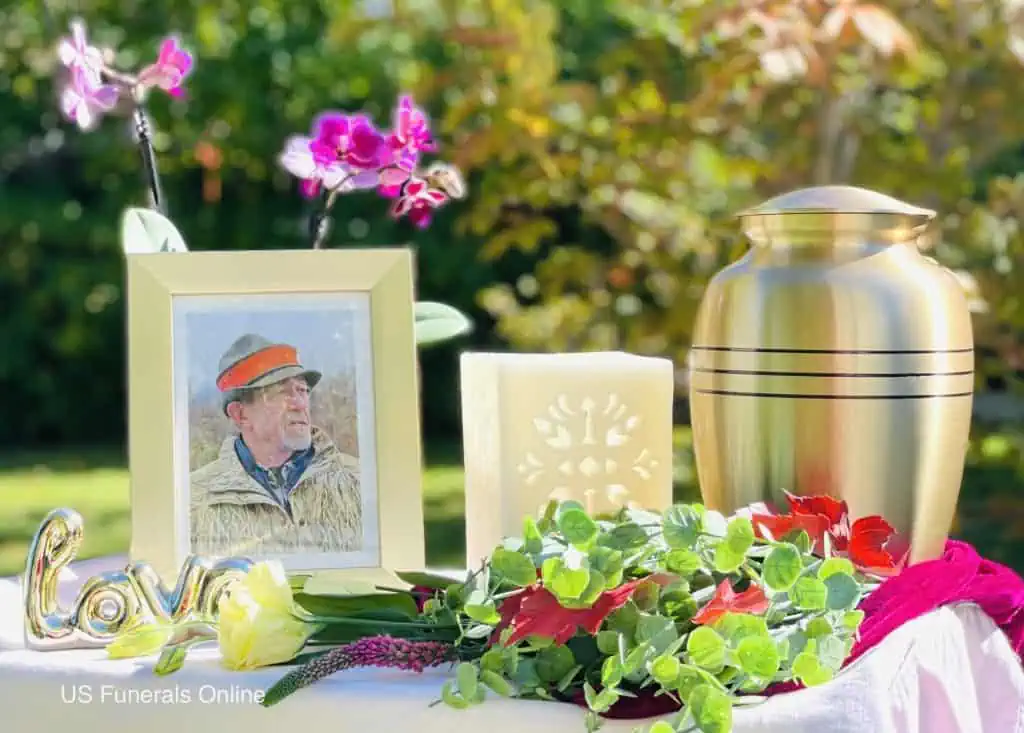
- Direct cremation – cremation with no viewing, ceremony, or services.
- Direct cremation with ash scattering – the cremation provider offers an option for the remains to be scattered after the direct cremation.
- Direct cremation with family goodbye viewing – an option that allows for a brief family viewing to say goodbye prior to direct cremation.
- Cremation with a visitation – similar to the option above, but this is a more formal visitation service for family & friends to pay respects prior to the cremation.
- Traditional Cremation Service – A full-service funeral ritual, with a ceremony held. The deceased is cremated after the funeral service.
- Cremation Memorial service – the deceased is cremated, and a service is held afterward with the cremated remains present.
- Anatomical donation cremation – donating one’s body to science which includes a ‘free’ cremation of the remains post-donation.
- Water cremation – is a newer option in the cremation market. Eco-friendly & affordable, but still limited to around 22 states. (Read more on Aquamation below)
What does cremation cost?

I could call this the “million-dollar question.” Many families go online to find out today. Cremation is becoming more popular. The word is out that it is cheaper than a traditional funeral….so how much does cremation cost?
Unfortunately, it is not a simple answer, as prices will vary depending on the type of cremation service you opt for, the ancillary services, and any county fees.
Plus, there can be surcharges for such things as removing medical implants if the deceased was overweight or if a residential collection is required.
As a guide to cremation costs – It is fair to say that the average cost of a direct cremation is $995 in most states if you select an affordable cremation provider.
However, do be aware that many full-service funeral homes generally charge between $2,000 – $3,000 for a direct cremation service.
The average cost of a Cremation Memorial Service is likely to be in the region of $3,000 – $5,000 (again, depending on the provider selected).
Alternatives to flame cremation – Bio Cremation (Water Cremation)
Water cremation, otherwise known as Aquamation, is now available in 22 states. It is being touted as the new alternative to flame cremation, offering a simple, sustainable, and environmentally friendly alternative. It has a 75% lower carbon footprint and basically uses warm water and potassium or sodium hydroxide to gently dissolve organic matter.
Read our Guide to Aquamation: A Greener Alternative for full information about water cremation, including whether it is legal, the process, and the costs. The average cost of bio cremation is $1,995.
You may also be interested in our post exploring the sustainability of flame cremation and its impact on the environment. How Environmentally Sustainable is Cremation?
What can you do with the cremated remains?

When you choose cremation for a loved one, you have a wide range of different and unique options for memorialization. You can still take a more traditional approach and inter a cremation urn at a cemetery.
You can keep the cremation urn at home, scatter the ashes, or choose from a wide array of personalized cremation memorial artifacts.
Visit our State Guides to Cremation and Funeral Planning to learn any rules for scattering ashes near you.
Also, our Guide to Ash Scattering will help you understand how to prepare for an ash-scattering memorial and safely scatter human ashes.
Our Guide to Cremation Urns will help you if you want to learn more about different urn options and prices.
And in our Funeral Products and Services Resource Section, you will find further articles about cremation memorialization, such as Memorial Reefs and Cremation Diamonds.
Handcrafted glass art and jewelry can be infused with a sample of cremation ashes to create beautiful and unique remembrance keepsakes. This is a more affordable permanent keepsake than a cremation diamond.
There is a wide array of options, including jewelry items, paperweights, hanging orbs, glass-blown flowers, wine glasses, and vases, to name but a few. Check out Spirit Pieces to learn more. The company was founded by many talented artists passionate about creating beautiful cremation artifacts for the modern era.
Religious and cultural considerations relating to cremation
Choosing cremation is a personal choice, but religious or cultural beliefs can also influence it. Over the last couple of decades, there has been a significant shift towards cremation, reflecting changing attitudes to religious and cultural belief systems. Below, we have summed up a brief guide to cremation and religions.
Cremation & Christianity
For a long time, the Christian Church opposed cremation, but in the 1960s changed its stance and accepted cremation in the belief that it did not impede resurrection. The Church still prefers burial but now accepts cremation as a disposition of the body. Although, the Church still advocates for the interment of cremated remains.
Cremation & Mormons
The Church of the Latter-Day Saints (LDS) does not prohibit cremation, although they generally advise against it.
Cremation & Hinduism
The Hindu belief system centers on the soul detaching from the body at death. For this reason, their belief is that cremation is the preferred final disposition of the body, enabling the soul to be ‘released’ from its mortal attachment. Enabling the soul to achieve reincarnation.
Cremation & Buddhism
Many Buddhists choose cremation as Buddha was cremated. However, Buddhism does not prescribe specific funeral practices to be followed.
Cremation & Judaism
Jewish law has prescribed for thousands of years that only ground burial is acceptable for those of the Jewish faith. Today, although discouraged, reform Judaism has begun to accept cremation if the cremated remains are buried in a Jewish cemetery.
Cremation & Islam
Islam is very strongly opposed to cremation. Muslims are prohibited from any association with cremation.
Cremation & Atheism
Although Atheism is not strictly a faith, it has been cited by Pew Research as the fastest-growing ‘religion’ in the U.S. This shift to a lack of faith is said to be a factor in the growth rate of cremation.
Can an obese or overweight person be cremated?
Yes, many crematories can conduct cremation for overweight bodies. It requires a larger cremation retort and chamber door, additional lifting equipment, and a reinforced cremation container. This does mean that a barometric cremation will generally cost more than a standard cremation.
A cremation for a body over 300 pounds is likely to cost an additional $100 – $400 in surcharges.
Read our full article on Can An Obese Person Be Cremated for more information.
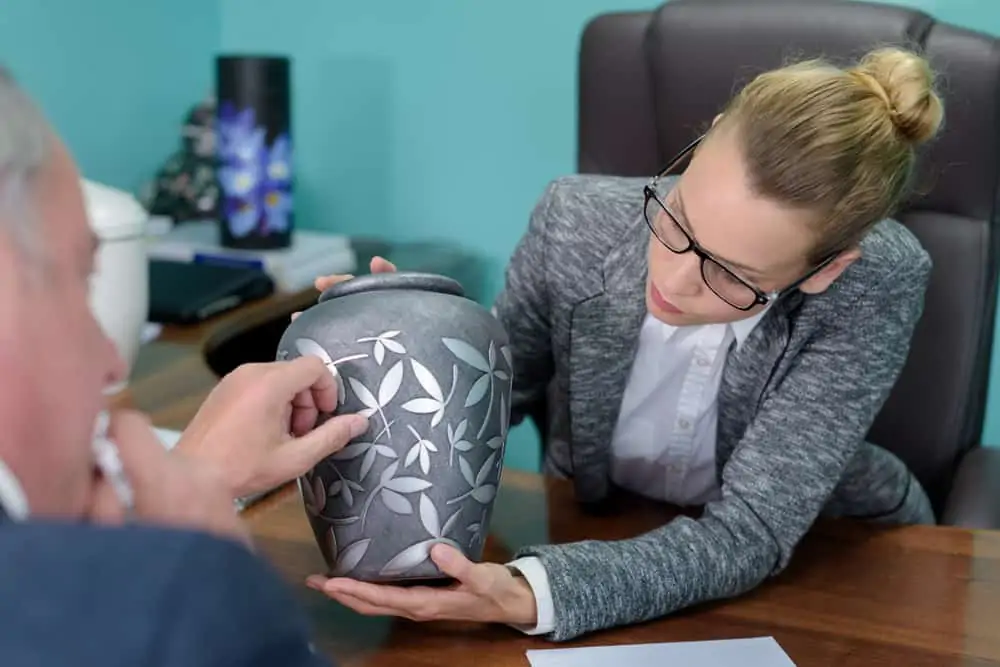
Choosing cremation artifacts for memorialization
Choosing cremation as a final disposition opens up many possibilities for memorialization. Cremated remains can still be interred in the form of a ‘traditional’ cemetery burial or cremation niche. Some families keep the cremation urn at home, either permanently or for a period, before deciding how and when to memorialize.
Cemeteries offer memorial scattering gardens, or ash scattering can be conducted in a whole variety of places and ways.
Read our Guide to Ash Scattering for Tips on How and Where to Safely Scatter.
There is now a whole array of other cremation memorial products that use a portion of cremated remains to make a permanent cremation keepsake of a loved one. Types of products and/or services you can consider include (but are not limited to) the suggestions below:
- Cremation diamond
- Memorial Reef ball
- Glass-blown items – paperweights, candle-holders, champagne flutes, Jewelry, etc
- Cement items – birdbaths, garden ornaments
- Portraits
- Gun cartridges
- Tattoos
- Fireworks
What happens with unclaimed cremated remains?
This is becoming a growing concern for many funeral homes, crematories, and local counties. Sometimes, the person who has arranged a cremation for the deceased does not call to collect the cremated remains. For some, they are either just not sure what to do with the remains or do not want to incur further costs making cremation memorial arrangements.
Counties that are finding themselves conducting more indigent cremation dispositions may be left holding remains if no family member comes forward to claim them.
So, what happens if cremated remains are unclaimed? Most funeral homes hold cremated remains for as long as possible, just in case a family member should come forward at a later date seeking the remains of their loved one.
However, as the cremation rate has climbed, this is becoming more of a storage issue for small funeral homes. Occasionally, a funeral home will opt to inter, or scatter remains they have held for some considerable time.
This is when all efforts to contact the surviving family have been exhausted. Arrangements to inter/scatter are dignified, and records of the location of the remains are maintained.
Due to the growing issue of unclaimed cremated remains (especially after a low-cost direct cremation), some funeral homes have introduced a new clause to their cremation contract. This clause allows for them to make dignified arrangements for scattering remains if they are not claimed within 90 days.
Below, we have listed a few more common questions about cremation.
How can I be sure I am receiving my loved one’s ashes?
Strict ID measures and cross-checks are made at every step in the process, from when your loved one is received at the funeral home to when his or her cremated remains are handed back to you. A unique metal ID tag is assigned to the body. This tag is double-checked and remains with the deceased at all times. The ID tag will usually be included with the cremation urn.
Are bodies cremated individually?
Yes. Funeral law governs that only one body can be cremated in a cremation retort at any time. Before the next cremation can proceed, the retort is fully cleared of all remains.
Are bodies clothed when cremated?
Yes, the deceased is ordinarily clothed in the cremation container. Although, a cremation can be done without any clothing covering the deceased.
What happens to the cremation container or casket when the deceased is cremated?
Today, cremation is commonly conducted using a simple reinforced cardboard container. The container burns with the body. Sometimes, wooden caskets are used, which can also be burned during the cremation process. If a funeral service were conducted first using a steel casket, the deceased would need to be transferred into a combustible container for the cremation.
Can a body be cremated with personal items?
Yes, some families opt to have something personal cremated with the deceased. Any personal items would need to be small and combustible. Personal items from the deceased that you wish to keep, such as jewelry, should be removed before the cremation.
Is it possible to view the cremation?
Yes, some crematories and funeral homes have established a special viewing area with their cremation machine for this purpose. It may serve those families who wish to confirm the cremation and ID of the body with their ‘own eyes.’ It also facilitates religious needs, such as Hindus who may wish to start the cremation as part of their faith ritual. As a cremation can take 3-5 hours, the viewing is usually just the beginning of the process.
What quantity of cremation ashes does the average adult body leave?
This is quite interesting as there is no specific correlation between the actual weight of the deceased and the amount/weight of the remaining cremation ashes. This is most probably due to the fact that the base remains after cremation are large bone remains and bone density.
An average adult typically produces between 5 – 8 pounds of cremated remains.
Visit our resource section on Cremation for further articles to answer FAQs about Cremation.
If you have a specific question about cremation that we have not answered here, contact us, and we will help you find the answer.

